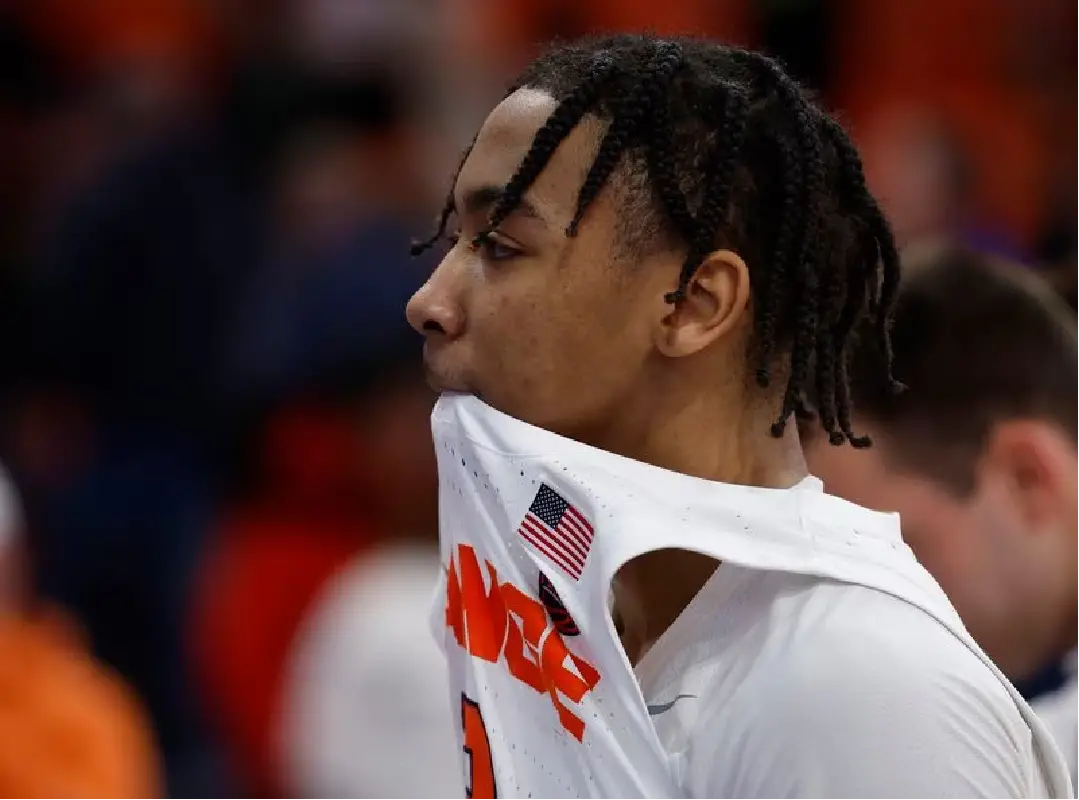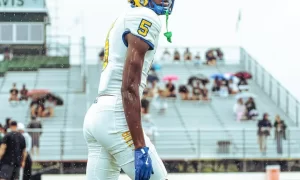For a particular beleaguered, has-been college basketball power, February 2023 was a no-good, very bad month. It began with public admonishment aimed at its coach who growled too loudly at the media. Later that week, the same coach was scolded for a badly-timed interview that required a week’s worth of walk-back. A rare ranked victory mid-month was followed by losses of 22, 18, 17, and 20 points to cement a losing in-conference record. The program’s starters are currently upset or the subject of transfer chatter. The team’s offense is one-dimensional, its defense is completely uncompetitive, and its aforementioned head coach is the subject of continuous replacement discussion that has intensified by the game.
This is not a description of 4-26 Louisville or 7-23 Georgetown. It is, of course, referencing a limping Syracuse squad that needs to take a good, long look in the mirror.
After such a month, the Orange shouldn’t like what they see.
Tuesday’s 96-76 immolation against Georgia Tech marked a true nadir for Syracuse hoops. With due respect to what The Fizz wrote just nine days ago, this is true rock bottom for a once-proud program that is now gawked at by Scott Van Pelt, Twitter Sickos, and former Big East enemies. If nothing else, SU has earned its status as a college basketball car accident, drawing eyes that can’t look away.
‘Cuse’s embarrassing flatline against a mediocre Yellow Jackets squad is one thing, but completely laying down at home is another. The Orange looked unprepared, uninspired, and like a team playing out the string. An already-sparse crowd saw that clearly and booed heartily. SU’s lack of readiness and fire is independent of poor performance and far more worrying than any on-court error.
It’s a frightening prospect for an already-pressurized Jim Boeheim, who took nearly 13 minutes to stand at the podium on Tuesday after his team got drilled on its own court. It was a hefty chunk of time for a coach usually known for gruff brevity, but one that seemed necessary to explain away all his team’s problems.
“We can’t stop anybody, that’s the bottom line…that’s my defense [the 2-3 zone], and we’re not able to stop anybody with it.” (Jim Boeheim postgame, 2/28/23)
For all the flak Boeheim has received this season, his ownership of the team’s collapse against Tech was as refreshing as it was concerning. Unfortunately, Boeheim’s lack of concrete solutions does not help lessen the enormity of Syracuse’s problems. This is a team with structural, strategic, and developmental discrepancies that all run chronically deep.
What’s especially sad about SU’s spiral this year is that the team’s former calling card has become its biggest liability. ‘Cuse’s once-famed defense has been utterly incapable over its past four games. Syracuse has given up nearly 91 points per game, allowed 13, 14, 16, and 18 three-pointers in explosive losses, and now ranks 220th in KenPom defensive efficiency. Its players look doomed in a decrepit 2-3 zone, but they play awful full-court press and look lost in rare spats of man-to-man. All three defensive strategies have been futile, especially so for a squad that has wallowed in repetitive futility all season. That fact in itself should cast a raised eyebrow toward its coaching staff.
SU’s three assistants are all former Orange players. The youngest of them (Gerry McNamara) last played at Syracuse in 2006 under Jim Boeheim. The other two (Alan Griffin and Adrian Autry) both played for the team in the 1990s. At this point, no one should treat them like the heroes of yesteryear who automatically know better. We ignore too often the role that ‘Cuse’s assistants have to help resolve festering issues. The Orange coaching staff is composed of Syracuse lifers, but it’s worth wondering what a fresh set of eyes from outside could bring to such a stricken group. Criticize Boeheim all you like, but he isn’t the only coach standing bewildered on the sideline as opponents rampage through SU’s watery zone.
With that in mind, it seems clear that some kind of staff or personnel shakeup is in order. Syracuse’s struggles have reached critical mass, and the program cannot continue to function in its current state. Tensions, poor play, and withering recruiting efforts have capsized a team that used to rub elbows with the sport’s blue bloods. At this point, Syracuse is further from those heights than it has ever been, and the next step is clear. Real change must take place, or the program will only drift further and further away from what it once was.






















